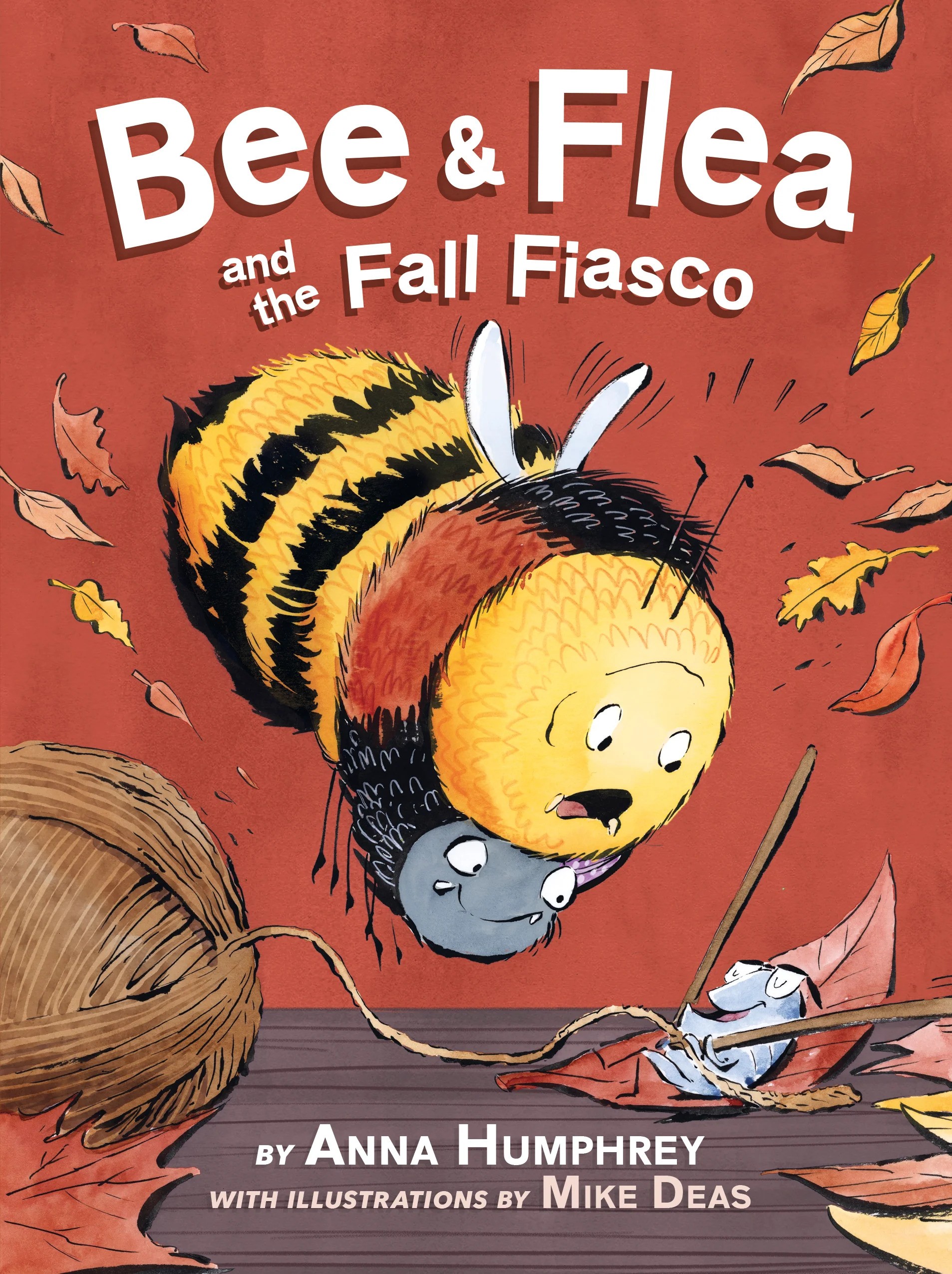Bea & Flea and the Fall Fiasco

Bea & Flea and the Fall Fiasco
Because Bee’s first adventure with the F.L.E.A. had been at the compost heap, she knew its rotten ways well. In fact, rot was the whole point of the heap!
Hardworking worms, hungry woodlice, and microscopic critters like rotifers and mites munched up the fruit and vegetable peels that the gardener tossed in. Then they digested them and pooped them out, turning them into nutrient-rich soil that helped new plants grow. It was messy, sure – but miraculous too.
Unfortunately, the second that Bee and Fuzz landed, Bee could see that things in the heap were no longer business as usual.”
The comedic environmental sleuthing duo who examined microorganisms and microscopic mysteries in Bee & Flea and the Compost Caper and investigated the water cycle in Bee & Flea and the Puddle Problem are back for another scientific adventure. In this third and final book in the series, the F. L. E. A. (Fenced-in-area Law Enforcement Agency) agents explore how backyard creatures adapt and prepare for the winter months.
When the weather turns chilly, Flea feels sluggish and reaches for a favourite beverage – a cup of blood sucked “fresh and hot from an extremely energetic chipmunk” to kickstart her day. Still sleepy, Flea decides to stay home and have a “quiet crafternoon” of knitting, turning over active patrol duty to her co-agent. Bee finds this sudden change of character to be quite puzzling but reluctantly flies solo to investigate a new commotion at the compost heap. When Bee notices the yard is strangely quiet and all the ants and worms are hiding underground instead of doing work, she thinks everyone has fallen into a “sinister, sleepy trance”. Bee spies a decomposing carved pumpkin, covered in mold, and suspects this “horrible hairy beast” is the culprit.
On her mission to protect the backyard from the “grisly gourd”, Bee gets some help from her hive sisters, including Queen Bee Beatrice. A new friend, Fuzz, a laid-back Woolly Bear Caterpillar who has a hip, skateboarder-dude style and a handless handshake, offers support in many ways, like serving as a warm scarf by wrapping around Bee’s neck. Through the course of the investigation, Bee comes to learn there is nothing nefarious about ladybugs huddling in leaves, chipmunks stashing seeds and worms tunneling into soil – they are all perfectly normal animal adaptions for surviving winter.
Woven throughout the 11 easy-to-read chapters are lots of scientific facts, such as woolly caterpillars have antifreeze blood that protects their organs in cold weather, and how bees dance to communicate. Words like “diapause” are conversationally explained: “It’s when insects and other critters slow down, settle in, and adapt to get through the subzero temperatures.”
As with the earlier books in the series, snappy writing keeps the narrative moving along at a fast pace. Witty banter flies between the characters, along with jokes (“Just reminded me of another joke, though: What do you get when you drop a pumpkin?” He paused. “Squash. HA! Get it, Bee? Because a pumpkin’s a kind of squash.”), and an itemized account of the eclectic contents of F.L.E.A.’s emergency preparedness pack (“a puff-sleeved blazer made of petunia petals”, “a karaoke machine made from a rock”).
Mike Deas’ black-and-white pen-and-ink illustrations appear throughout the short chapters and offer another layer of humour. To stave off a chill, Bee sports spider-silk leg warmers, and Flea cozies up by wearing six dandelion-fluff slippers.
In this satisfying series ending, policies-and-procedures oriented Bee not only learns how animals in the backyard adapt for winter survival, she also learns how to adapt emotionally when she bids a fond farewell to her pal Flea for the season and goes with the flow.
Bee & Flea and the Fall Fiasco is a seriously fun series sendoff.
Linda Ludke is a librarian in London, Ontario.
